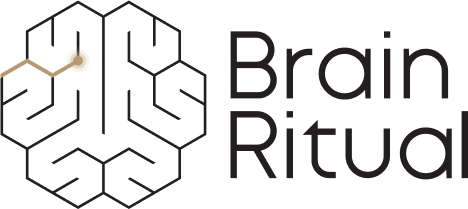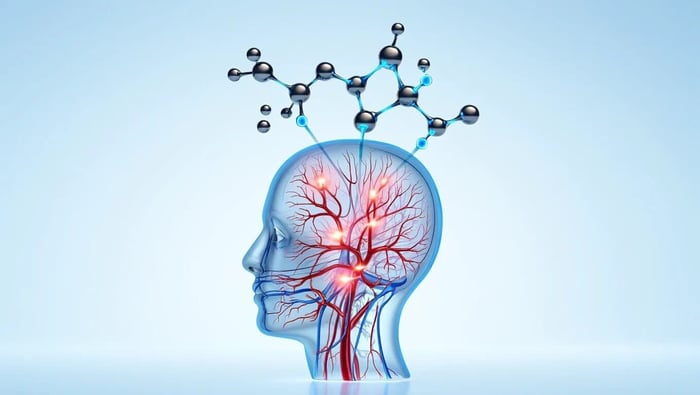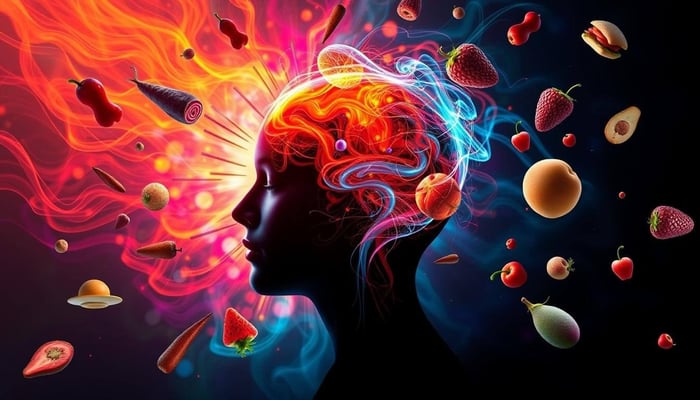Table of Contents
- What Is a Migraine Elimination Diet?
- Is This Approach Right for You?
- How Does It Work?
- How Long Does the Elimination Diet Take?
- Potential Benefits for Migraine Sufferers
- Foods to Eat Freely: Where to Start
- Foods to Strictly Avoid (During the Initial Phase)
- Why Certain Foods Are Avoided on a Migraine Elimination Diet
- Tips for Reintroducing Foods
- Common Challenges and How to Overcome Them
- Common Questions
- Final Thoughts
At a Glance
|
What Is a Migraine Elimination Diet?
Feeling unsure about what might be triggering your migraines? Could something you’re eating be part of the problem? If you're wondering how to do a migraine elimination diet offers a clear, step-by-step method to help identify foods that might be contributing to your symptoms. It can make it easier to choose foods that work for you and help reduce migraines over time.
Rather than following general “healthy eating” advice, this approach focuses on temporarily removing specific foods. This helps pinpoint individual triggers more clearly. During the elimination phase, you avoid items that are known to be common migraine contributors, such as certain fruits, vegetables, dairy products, processed meats, and additives.
Once these foods are removed, they’re gradually reintroduced one at a time while you carefully watch for any changes in your symptoms. This method can help you connect the dots between what you eat and how you feel, without guessing or sticking to restrictive, generic food lists.
An elimination diet for migraine isn’t about restricting your entire diet forever. Instead, it’s a temporary, structured way to learn which specific foods might need to be avoided long term to better support your symptoms. The goal is to create a personalized, sustainable diet that supports your long-term health and helps you feel more confident in your daily food choices.
Is This Approach Right for You?
An elimination diet isn’t really necessary for everyone, but it can be beneficial if you suspect that certain foods are making your symptoms worse. You might like to try this approach if you experience frequent or unpredictable migraine attacks, especially if you notice symptoms after eating certain meals.
It can also be helpful if you’ve already tried avoiding common migraine diet triggers but still haven’t been able to spot clear patterns. For some people, using a more structured method helps uncover connections that might not be clear when changing foods individually.
While many people find it a valuable tool, it’s important to remember that a comprehensive migraine elimination diet takes planning and patience. Working with a healthcare professional or dietitian can provide extra support and make it easier to meet your nutritional needs.
How Does It Work?
An elimination diet generally involves two main phases: elimination and reintroduction.
During the elimination phase, you remove foods and ingredients that are commonly linked to migraine attacks, especially those containing histamine, nitrates, tyramine, and sulfites. This [migraine foods to avoid list {link}] includes certain fruits, vegetables and legumes, dairy products, processed meats, grains, fats, fermented products, food additives, and more. By simplifying your diet, you create a “clean slate,” which helps to identify potential triggers and track changes in your migraine patterns.
Many people find it helpful to follow a simple migraine elimination diet meal plan during this stage, as it can make shopping and daily choices easier.
Once the elimination phase is complete, you can slowly start reintroducing the avoided foods one at a time. Each food is added back for a few days while you watch carefully for any symptoms. Taking this gradual, mindful approach makes it easier to spot which specific foods might be contributing to your migraines, rather than guessing or relying on broad assumptions.
Throughout both phases, it is important to keep a detailed food and symptom diary. By recording what you eat and how you feel each day, you can gain valuable insights and clearly connect certain foods to migraine patterns. This gentle process can help you create a more tailored and sustainable way of eating that works for you.
How Long Does the Elimination Diet Take?
The strict elimination phase is usually followed for about two to six weeks. This gives your body time to “reset” and helps you clearly see changes in your symptoms. While some people might need a bit longer to calm their system, it’s generally not recommended to stay on the very limited elimination phase for more than six to eight weeks without professional guidance. After this phase, you’ll begin carefully reintroducing foods to identify your personal triggers.
The full process, including the initial reset, reintroducing foods one at a time, and deciding which foods to keep out of your diet, will typically take about two to three months in total.
Potential Benefits for Migraine Sufferers
An elimination diet isn’t a guaranteed solution for everyone, but for many, it offers valuable insights and potential relief. By identifying specific food triggers, you may experience fewer migraine attacks, less severe symptoms, improved overall energy, and enjoy a greater sense of control over your daily life. For some, this includes discovering unexpected triggers like a specific dairy product, or learning about and combining dietary changes with other supportive strategies such as optimizing nutrients, focusing on sleep, or exploring nutritional approaches like Brain Ritual® to complement a low-carb or ketogenic lifestyle for even greater benefits.
You might also notice improvements in overall well-being, including better digestion, steadier energy levels, and more confidence when choosing foods. Even if you don’t pinpoint a single major trigger, the process can help you feel more in tune with your body and give you a clearer understanding of how different foods affect you.
Ultimately, the goal is to develop a style of eating that’s more personal and supports migraine management, long-term health, and day-to-day well-being.

Foods to Eat Freely: Where to Start
When beginning a migraine elimination diet, it helps to focus on what you can enjoy rather than just what you need to avoid.
This list of foods to eat freely serves as your starting point and foundation during the elimination phase.
While individual tolerances can vary, these options are generally considered low-risk and can help keep your meals balanced and satisfying. Follow this simplified food list for at least two weeks before you start reintroducing other foods.
Focusing on these foods makes it easier to build simple, nourishing meals while you work on identifying potential triggers.
What You Can Eat During the Elimination Phase
Fresh meats and fish
For the strictest approach, focus mainly on poultry and lamb, and limit large fish intake to help reduce potential toxins.
Chicken
Turkey
Fresh fish (wild-caught, smaller fish, or low-toxin options such as wild-caught salmon, sardines, or white fish in moderation)
Lamb
Beef (fresh, not aged or processed)
Vegetables
As most vegetables can be freely enjoyed, it’s recommended to check the smaller “vegetables to avoid” list in the next section to guide your choices.
Leafy greens (lettuce, kale, spinach)
Zucchini
Carrots
Parsnips
Broccoli
Brussels Sprouts
Green beans
Low-histamine fruits
Blueberries
Apples
Pears
Watermelon
Kiwi
Mango (small amounts)
Gluten-free grains or safe starches
Rice
Millet
Note: Quinoa, oats, and buckwheat are often considered lower risk foods but can still cause reactions in some people. They’re typically reintroduced early on to confirm individual tolerance.
Healthy fats
Olive oil (small amounts are usually fine, but avoid olives themselves)
Coconut oil
Avocado oil
Fresh herbs and mild spices
Basil
Parsley
Cilantro
Thyme
Chives
Beverages
Water
Herbal teas (such as chamomile or ginger; make sure they don’t contain black or green tea)
Coconut water (unsweetened)
These foods provide a strong foundation to help you feel nourished and supported while you work through the elimination phase.
By focusing on what you can enjoy, you’ll find it easier to maintain variety and make your meals satisfying and enjoyable, even during this more structured part of the process.
You can also check a more detailed Migraine Elimination Diet PDF food list here.
Sample Elimination Daily Meal Plan
Here’s a simple example day to show how these foods can come together in easy, satisfying meals. Feel free to adjust based on your preferences and what feels good for you.
Breakfast: Plain scrambled eggs (made without milk or dairy) with spinach and fresh herbs (like basil or chives), served with a side of sliced pears or blueberries.
Lunch: Grilled chicken salad with leafy greens, carrots, and zucchini, dressed with a simple olive oil dressing.
Snack: An apple or a small bowl of watermelon.
Dinner: Baked wild-caught salmon with steamed broccoli and zucchini, plus plain white rice if desired, finished with a small drizzle of olive oil.
Beverages throughout the day: Water, herbal tea (such as chamomile or ginger), or unsweetened coconut water.
Foods to Strictly Avoid (During the Initial Phase)
When starting a migraine elimination diet, certain foods and ingredients are strictly avoided during the initial phase to create a clean baseline so you can better understand how your body reacts.
Many of these problematic foods contain compounds that can trigger migraines, such as histamine, tyramine, nitrates, or various additives. We’ll explore the “why” behind these choices later, but by removing the following potential triggers for a short time, you give yourself the best chance to identify your personal sensitivities clearly.
These are some of the most common examples of foods to initially avoid and then selectively reintroduce. A more comprehensive breakdown will be provided in the table below.
Meat and Fish, especially Aged or cured meats
Bacon (histamine, nitrates, additives)
Salami (histamine, tyramine, nitrates)
Pepperoni (histamine, tyramine, nitrates)
Ham (histamine, nitrates)
Hot dogs (nitrates, additives)
Sausages (histamine, nitrates, additives)
Prosciutto (histamine, tyramine)
Pastrami (histamine, tyramine, nitrates)
Smoked or dried meats like jerky (histamine, tyramine)
Liver (histamine, tyramine)
Game (histamine, tyramine)
Shellfish (histamine)
Fish that has sat (histamine)
Egg and Dairy Products
Milk (histamine, additives)
Cream (histamine)
Ice cream (histamine, additives)
Cheese, especially aged and soft (histamine, tyramine)
Yogurt (histamine)
Sour cream (histamine)
Buttermilk (histamine)
Eggs (histamine)
Fruits and vegetables
Apricot (histamine)
Avocados (histamine, tyramine)
Bananas (tyramine)
Beets, Beetroot (nitrates)
Broad beans / Fava beans (tyramine)
Cherry (histamine)
Citrus fruits: grapefruits, lemons, limes, oranges (histamine)
Dried fruits (e.g., currants, raisins, dates, prunes) (histamine, sulfites)
Eggplant (histamine)
Figs (tyramine)
Grapes (sulfites)
Green peas (tyramine)
Loganberry (histamine)
Mulberry (histamine)
Olives (histamine, tyramine)
Onion
Overripe fruits (histamine, tyramine)
Papaya (histamine)
Potato (tyramine)
Pineapple (histamine)
Pumpkin (histamine)
Raspberries (histamine)
Red plums (histamine)
Sauerkraut (histamine)
Snow peas (tyramine)
Spinach (histamine, tyramine)
Strawberries (histamine)
Sweet potato (tyramine)
Tomatoes, both Fresh and Processed (histamine, tyramine, sulfites, nitrites)
Legumes
These are often reintroduced early since some people tolerate them well, but typically excluded initially to create a clean baseline.
Beans (black beans, kidney beans, pinto beans, navy beans) (lectins, possible tyramine)
Lentils (lectins)
Chickpeas (lectins)
Peas (lectins)
Soybeans and soy products (histamine, tyramine)
Cereals/grains
Barley (gluten; avoid all forms, including barley flour)
Oats (avenin sensitivity or gluten contamination)
Processed corn-based cereals (e.g., cornflakes) (additives, possible gluten cross-contamination)
Rye (gluten; avoid all forms, including rye flour)
Seitan (gluten)
Triticale (gluten)
Wheat (gluten; avoid all forms, including wheat flour, semolina, durum, bulgur, couscous)
Nuts and seeds
These are mainly foods that can stimulate your body’s cells to release histamine (sometimes called histamine "liberators").
Almonds
Walnuts
Cashews
Pecans
Peanuts (mold toxins, and a histamine liberator)
Pistachios
Sunflower seeds
Sesame seeds
Sweets, cakes, and baked desserts
Chocolate (histamine, tyramine)
Cocoa (histamine)
Candy (additives, sweeteners)
Cakes, muffins, pastries (gluten, additives)
Donuts (gluten, additives)
Sweet spreads and frosting (additives)
Fermented foods
Sauerkraut (histamine)
Kimchi (histamine)
Miso (histamine)
Soy sauce (histamine)
Vinegar (histamine)
Pickles (histamine)
Fermented dairy (yogurt, kefir) (histamine)
Herbs and spices
Chili powder (histamine, additives)
Curry powder (histamine, additives)
Paprika (histamine, additives)
Cinnamon (sensitivity)
Nutmeg (sensitivity)
Cloves (sensitivity)
Allspice (sensitivity)
Other Processed and packaged foods
Chips with flavoring (additives, MSG)
Pre-made frozen meals (additives, preservatives)
Instant noodles (additives, MSG)
Seasoning packets (MSG, additives)
Packaged snacks with artificial flavors (additives)
Alcohol and certain beverages
Red wine (histamine, tyramine, sulfites)
Beer (histamine, tyramine)
Champagne (histamine, sulfites)
Aged spirits like whiskey and rum (histamine, tyramine)
Kombucha (histamine)
Common food additives
MSG — monosodium glutamate (additives, excitotoxins)
Artificial sweeteners (e.g., aspartame) (excitotoxins)
Nitrates and nitrites (preservatives)
Sulfites (preservatives)
Food colorings (additives)
Benzoates (preservatives)
Remember, these foods are only removed temporarily to help you learn more about your personal triggers. Many can be added back into your diet permanently later on, once they’ve been ruled out as triggers and depending on your individual tolerance.
Why Certain Foods Are Avoided on a Migraine Elimination Diet
The aforementioned foods are avoided during a migraine elimination diet because they contain compounds that can trigger migraine attacks in sensitive individuals. Understanding these main triggers can help you feel more confident in your food choices and make it easier to decide what to add back later on.
Histamine
Histamine is a natural compound found in many aged and fermented foods, as well as some fresh ones. It plays key roles in immune responses and helps regulate functions like stomach acid and blood vessel dilation. Research has shown that histamine can sensitize the trigeminovascular system in the brain, an important player in migraine pain, by releasing inflammatory neuropeptides such as CGRP. When histamine builds up in the body or isn’t broken down properly, it may trigger migraines in sensitive individuals.
Tyramine
Tyramine is produced when proteins in food are broken down, especially during aging or fermentation. It can trigger the release of neurotransmitters like norepinephrine and dopamine, which influence blood vessel constriction and dilation. This mechanism may activate the trigeminovascular pathway, sensitizing pain fibers and potentially causing migraines. Higher levels of tyramine and its related amines have been observed in migraine sufferers, suggesting a strong biochemical link.
Nitrates and nitrites
Nitrates and nitrites are preservatives commonly found in cured and processed meats. In the body, they can convert to nitric oxide, a molecule that causes blood vessels to widen (vasodilation). Research shows that individuals with migraines often have higher levels of nitrate/nitrite-reducing oral microbes, suggesting that increased nitric oxide production may play a role in triggering migraine episodes.
Sulfites
Sulfites are used as preservatives in wines, dried fruits, and packaged foods. They can cause oxidative stress and may impair sulfite oxidase, an enzyme that normally helps convert sulfites into harmless sulfate. When this pathway is disrupted, sulfites can build up in the body, potentially leading to headaches and other migraine symptoms.
Food additives
Additives such as MSG and artificial sweeteners are used to enhance flavor or reduce calories. They can overstimulate nerve pathways and disrupt neurotransmitter balance, which may contribute to migraine attacks in some people.
Caffeine
While small amounts of caffeine can help some people with their migraines, overuse or sudden withdrawal can be problematic. Caffeine affects blood flow and adenosine receptors in the brain, which can influence migraine susceptibility. It is often reduced or avoided initially to help reset sensitivity levels.
In addition to avoiding potential triggers, being mindful of anti-inflammatory aspects of your diet, such as eating antioxidant-rich foods like leafy greens, berries, and colorful vegetables, may help support your body’s natural defenses. Sticking to regular mealtimes may also lower the chance of energy dips and make your system more resilient to migraines.

Tips for Reintroducing Foods
Once you’ve completed the elimination phase, reintroducing foods into your diet is an important and sometimes surprising part of the process. It’s best to add back one food at a time, allowing at least three to five days between each new food. This helps catch any delayed reactions, making it easier to clearly link specific foods to potential migraine symptoms.
Ideally, start with foods you miss the most or those you suspect are least likely to be triggers. Some people also choose to reintroduce foods grouped by potential trigger compounds (like histamine or tyramine) to help identify broader sensitivities. Keep portion sizes moderate, and avoid reintroducing multiple ingredients, even if they’re from closely related food groups, in the same meal to reduce confusion.
During this stage, your food and symptom diary is essential for keeping on top of your migraine trigger elimination diet. By noting any changes to your migraine symptoms, such as headaches, digestive issues, mood shifts, auras, or changes in energy, you can build a more accurate picture of how a specific food affects you.
If a food seems to trigger your symptoms, remove it from your diet and try it again later to confirm whether it’s an actual trigger. A slow, careful approach can help you feel more confident about your choices and avoid unnecessary long-term restrictions.
Common Challenges and How to Overcome Them
Starting and sticking to an elimination diet can feel overwhelming at times, especially if you have a busy schedule or social events coming up. Planning ahead is key to success. Checking menus in advance, bringing safe foods to work, suggesting restaurants with flexible options to your friends, or eating a small meal beforehand so you’re not overly hungry can all make these situations much easier.
It also helps to eat regularly and avoid skipping meals, as these can be a trigger for some. Try to eat freshly prepared food where possible, as leftovers and overripe items may contain higher levels of migraine-triggering compounds.
Feelings of restriction or missing favorite foods are also common. Remind yourself that this phase is temporary and designed to help you learn more about how your body reacts to different foods. Exploring new recipes and focusing on what you can enjoy, rather than what you’re avoiding, can help make meals feel more positive and satisfying.
When progress feels slow, it’s not uncommon for your motivation to dip. Reminding yourself of your reasons for starting and the positive impacts it may have on your life, such as fewer migraine attacks, more steady energy throughout the day, or a greater sense of routine and predictability in your life, can help keep you on track. Others find it helpful to work with a dietitian or join a supportive community for extra encouragement and practical tips. Celebrating small wins along the way, such as discovering that one of your favorite foods is safe for you to eat, can also help you stay positive and motivated throughout the process.
If you’re concerned about missing key nutrients when limiting your diet, you might consider a science-backed nutritional approach like Brain Ritual®. It’s designed to support brain function and metabolic health without including common migraine food triggers, making it a gentle addition during more restrictive phases.
Brain Ritual® is a medical food intended for the dietary management of migraine under medical supervision. It is not intended to diagnose, treat, cure, or prevent any disease.
Common Questions
Why should leftovers, stored foods, and overripe fruits be avoided on a migraine elimination diet?
As food sits over time, natural chemical changes can increase levels of compounds like histamine and nitrates. Both are known migraine triggers. Leftovers, overripe fruits, aged cheeses, and even previously cooked vegetables may contain increased amounts of these compounds. During the elimination phase, it’s best to stick with freshly prepared foods to help limit your exposure and get clearer results.
What happens if I eat a trigger food during the elimination phase?
Don’t worry, this is exactly why you're doing the diet. If you notice symptoms after eating a particular food, note it carefully in your food and symptom diary. Then pause and return to your last known symptom-free stage (your baseline or previously safe stage). Allow yourself a few clear, symptom-free days before continuing to introduce new foods. Remember, identifying triggers is the goal. Experiencing symptoms isn't a setback; it's valuable information that can help you better manage your migraines going forward.
What if I’m still getting migraines even when I stick to the baseline diet?
It can feel disheartening, but it’s not uncommon. Even with a clean, trigger-free baseline diet, migraines may still happen because food is only one part of the picture.
Other factors like stress, disrupted sleep, hormone fluctuations, or changes to your daily routine can also act as triggers. It can be helpful to track your symptoms alongside lifestyle patterns. An elimination diet is a useful tool, but it often works best when combined with a more holistic look at what’s going on in your day-to-day life.
Final Thoughts
A migraine elimination diet can feel challenging at first, but it offers a valuable opportunity to learn more about your body and reduce migraine triggers in a personal, sustainable way. By carefully removing and reintroducing potential trigger foods, you may uncover surprising connections that help you feel more confident in your diet and more in control of your daily life.
Remember, an elimination diet is not about restricting yourself from foods forever; instead, it’s about creating a way of eating that supports your long-term health, helps minimize migraine attacks, and fits into your lifestyle.
If you're not sure where to start or want extra support along the way, working with a healthcare professional or dietitian can make the whole process smoother and more reassuring.




